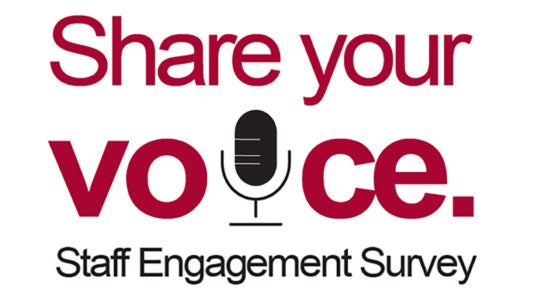Staff survey reveals pride in Stanford and confidence in its future
Results from a recent survey indicate that the vast majority of Stanford staff members are proud to work at the university, find meaning in their work and feel confident in the institution’s future.
Nine out of 10 Stanford staff members are proud to work at the university and feel confident in our future, according to the results of the 2018 Staff Engagement Survey administered by University Human Resources.
The staff participating in the survey gave Stanford high marks for its commitment to professional development and openness in communication, and noted feeling valued as Stanford employees.
Staff members also expressed a desire for better collaboration across departments, groups, schools and units, greater efficiency in processes to avoid rework and more efficient processes university-wide to avoid duplication of efforts.
In reply to an open-ended question that invited broad response, staff members also revealed that affordability remains a key challenge to living in the Bay Area and expressed a desire for more flexibility with work arrangements.
How results will be used
School and unit leaders will communicate local results to staff by early February.
The survey results will give the university, schools and units a chance to identify priorities for workplace improvement, as well as to recognize what practices are working well.
In addition, staff may be asked to share further input in the form of surveys, assessments and focus groups as university leaders delve into the results more deeply to help inform initiatives under the long-range planning process.
“We now know what is working well and what needs to improve. In some areas, we will need to better understand why people responded as they did and solicit ideas about how to move forward,” said Marguerite Kunze, associate vice president of talent management & workforce strategy in University Human Resources. Kunze is overseeing the survey analysis and action planning.
High engagement
The first staff survey, conducted in 2015, led to improvements in the staff experience across the university and within schools and units. In that survey, there were 51 questions, 46 of which were recast in the 2018 staff survey, allowing comparisons that suggest what is going well and where there are opportunities for improvement.
The results have also been compared with those of other four-year universities nationwide and with U.S. high-performing companies, such as those on the Fortune’s Most Admired and Best to Work For lists.
The 2018 survey was distributed to benefits-eligible staff, including exempt, non-exempt, bargaining unit, non-academic staff, athletics coaches, academic librarians and academic research staff (including SLAC). Of the 13,122 staff members invited to participate in the 2018 survey, 66.7 percent (8,754) responded— an increase of 1,528 staff respondents from 2015.
To keep responses confidential, Stanford partnered with CultureIQ, an independent organization, to administer the survey. The survey included 48 core questions spread among 11 categories (engagement, inclusion & diversity, alignment, continuous improvement, development, agility, respect & trust, collaboration, performance management, openness and efficiency) and one open-ended question.
Overall, the level of staff engagement at Stanford is exceptionally high: It exceeds the U.S. High Performing and U.S Higher Education benchmarks, with an increase in staff members feeling energized by their jobs. Four of the 11 categories listed above are recognized as being the most influential drivers of staff engagement: inclusion & diversity, alignment, collaboration and efficiency.
Other results
The 2018 survey specifically revealed that:
- 80 percent of respondents say Stanford encourages and promotes diversity of backgrounds, talents and perspectives. While that is a high score, it falls below the U.S. High Performing benchmark and is a key area of emphasis in Stanford’s IDEAL initiative.
- Respondents indicated a decrease in the Inclusion category – for example, when asked if people of all backgrounds can succeed at Stanford. The score dropped 2 percentage points from 2015 and is 4 percentage points behind the U.S. High Performing benchmark.
- Alignment has improved since 2015, with 76 percent of staff members seeing a clear link between their work and school and unit goals and objectives.
- Collaboration, at 64 percent, exceeds the Higher Education benchmark (51 percent), while still presenting opportunities for greater cooperation and sharing of best practices.
- Scores related to development show that more than 80 percent of respondents believe that Stanford provides opportunities to learn new skills. In addition, 83 percent feel their work group is continually improving the quality of work they do.
- When rating openness, 77 percent – 2 percentage points higher than in 2015 – feel their immediate supervisor communicates useful and important information.
- In terms of respect and trust, 74 percent of staff respondents said they feel valued as an employee of Stanford and 68 percent trust their peers to put their work group goals before their own personal goals. When asked about whether all levels of those who work at Stanford are treated with respect, the results show a lower score, with 61 percent in agreement.
Employees can learn more about university-wide actions taken based on the 2015 survey results, view an infographic summary of the new survey results, and follow the progress of staff survey actions moving forward by visiting the Cardinal at Work website.

